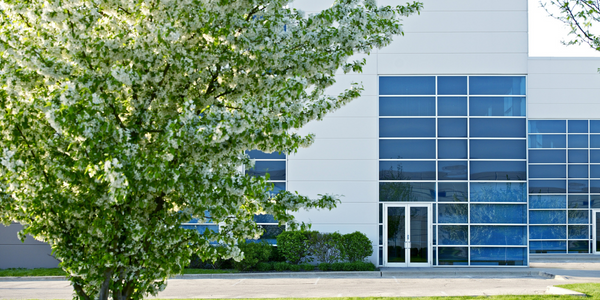Global Manufacturer Chooses SimpliVity for IT Refresh, App Delivery improvement and Disaster Recovery
---nyse--hpe_1.jpg)
Customer Company Size
Large Corporate
Region
- Europe
Country
- Turkey
Product
- OmniCube hyperconverged infrastructure
Tech Stack
- SAP
- VMware vCenter
Implementation Scale
- Enterprise-wide Deployment
Impact Metrics
- Cost Savings
- Productivity Improvements
- Digital Expertise
Technology Category
- Infrastructure as a Service (IaaS) - Cloud Computing
Applicable Industries
- Cement
Applicable Functions
- Discrete Manufacturing
- Business Operation
Use Cases
- Infrastructure Inspection
- Predictive Maintenance
Services
- Cloud Planning, Design & Implementation Services
- System Integration
About The Customer
Nuh Cement (Nuh Çimento) is a global producer and supplier of cement, ready-mixed concrete, and building products. The Turkey-based company operates the highest capacity cement production facility in all of Europe. Nuh recently replaced its legacy IT systems with Simplivity OmniCube hyperconverged infrastructure. The next-generation distributed data center reduces total cost of ownership, streamlines operations, and ensures efficient and reliable data protection for the company’s business-critical applications.
The Challenge
Nuh Cement, a global producer and supplier of cement, ready-mixed concrete, and building products, was facing challenges with its legacy IT systems. The systems were becoming increasingly inefficient, risky, and expensive. The manufacturer’s siloed IT infrastructure included legacy servers and stand-alone storage systems—all deployed in a single data center. The company’s IT department relied on a variety of data backup and recovery tools for data protection. Disasters or hardware failures had the potential to impair critical IT services and disrupt business; restoring applications could take hours or even days using the legacy data protection solutions. Dissatisfied with the performance, reliability, and economics of its aging information systems, Nuh’s IT team launched a business transformation program to upgrade the company’s IT infrastructure.
The Solution
After a thorough investigation process involving a number of vendors including Dell, HP, and IBM, Nuh selected SimpliVity OmniCube hyperconverged infrastructure systems for its next-generation data center. The SimpliVity solution eliminates cost and complexity by consolidating a variety of IT functions—including compute, storage, network switching, replication, and backup—onto virtualized, industry-standard x86 hardware. Nuh implemented a 4+2 OmniCube federation configuration for ultimate data protection. The manufacturer replaced four racks of legacy equipment with four clustered 2U OmniCube CN-3000 systems in its primary data center. They also deployed two OmniCube CN-3000 systems in a remote data center for disaster recovery. The IT group centrally manages the distributed configuration using VMware vCenter.
Operational Impact
Quantitative Benefit

Case Study missing?
Start adding your own!
Register with your work email and create a new case study profile for your business.
Related Case Studies.

Case Study
System 800xA at Indian Cement Plants
Chettinad Cement recognized that further efficiencies could be achieved in its cement manufacturing process. It looked to investing in comprehensive operational and control technologies to manage and derive productivity and energy efficiency gains from the assets on Line 2, their second plant in India.

Case Study
Digital Transformation of Atlanta Grout & Tile: An IoT Case Study
Atlanta Grout & Tile, a Tile, Stone & Grout restoration company based in Woodstock, Georgia, was facing challenges with its traditional business model. Despite steady growth over the years, the company was falling behind the web revolution and missing out on the opportunity to tap into a new consumer base. They were using independent software from different vendors for each of their department information and workforce management. This resulted in a lot of manual work on excel and the need to export/import data between different systems. This not only increased overhead costs but also slowed down their response to clients. The company also had to prepare numerous reports manually and lacked access to customer trends for effective business decision-making.

Case Study
Revolutionizing Construction Equipment Rental: A Case Study on ProsRent and ENO8
ProsRent, a startup that won the 'Best Financial Opportunity' and 'Best Pitch' at CodeLaunch 2016, aimed to revolutionize the way construction professionals source and rent heavy equipment. In the construction industry, project managers and contractors typically rent heavy equipment from supply companies. However, predicting inventory can be challenging, and finding the required equipment at the right time and place can be a hassle. If the preferred vendor doesn't have the required equipment, it results in wasted time and money in searching for it, often leading to higher costs due to non-preferred rates and increased delivery costs if the vendor is located far from the job site. Suppliers, on the other hand, desired access to a wider base of trusted renters that they didn't have to vet themselves and wanted to offer dynamic rental pricing based on demand and availability in their market. ProsRent's challenge was to produce a minimum viable product that was fast and first to market but also strong enough to engender loyalty and repeat business from the target market.

Case Study
AI-based Automation for Commercial Office HVAC: A Verdigris Case Study
Modern buildings are required to run longer hours, support a variety of end uses, and contribute to higher levels of economic productivity, leaving a thin margin for error. However, even the most advanced building and environmental control systems have failed to adequately support facilities and operations management. Buildings are often inefficient and the people using them are underserved. To meet occupant comfort and maintain cost and energy efficiency, a dynamic, AI-assisted approach is needed.

Case Study
Revamping EE's Legacy ERP: A Case Study on BT's Strategic Transformation
EE, even after its merger with BT, was operating its ERP estate on legacy infrastructure, hosted on the premises of a third-party supplier. This outdated system resulted in a volume-based operational model, higher time to market, longer delivery cycles, and unsatisfactory customer experience. BT recognized the need for a strategic transformation of these aging ERP systems and sought a partner who could proactively manage application services. The partner was also expected to handle development requirements associated with application management services, drive accountability, and ownership with a time and target-driven transformation of these services. BT's primary goals were to improve customer experience, reduce cycle time, and measure these improvements with precision.







